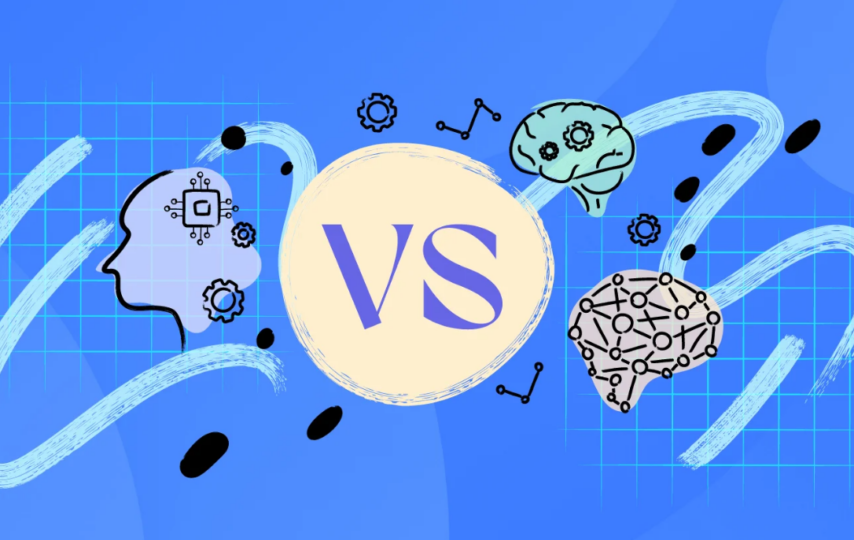In the age of rapid technological advancement, a pivotal question has emerged: when it comes to decoding and interpreting research, who does it better—human brains or machine algorithms? The battle between human cognition and machine precision has been ongoing, with both sides showcasing remarkable abilities and facing unique challenges.
The Human Brain: Strengths and Capabilities
The human brain is a marvel of nature, capable of complex thought, emotional intelligence, and creative problem-solving. Human researchers bring to the table an unparalleled ability to understand context, draw from diverse experiences, and navigate ambiguity with intuition and critical thinking. In fields where the data is subjective, nuanced, and requires a deep understanding of cultural or social contexts, humans undeniably have the upper hand. Their ability to perceive subtleties, empathize, and make sense of complex, abstract concepts is invaluable, particularly in qualitative research.
The Limitations of Human Cognition
However, the human brain is not without its limitations. Biases, whether implicit or explicit, can cloud judgment and lead to skewed interpretations. Subjectivity can become a stumbling block, preventing the objective analysis of data. Furthermore, humans are susceptible to fatigue, cognitive overload, and the constraints of time, all of which can impede the research process. The intricate dance of decoding complex data requires sustained attention and mental agility, and there are instances where the human brain may fall short.
Machine Algorithms in Research
Enter machine algorithms: the digital workhorses capable of processing vast amounts of data at lightning speed. With their ability to quickly analyze and decode research data, machine algorithms have become indispensable in various fields. They excel in areas where data is quantitative, structured, and massive in volume. From identifying patterns in large datasets to processing information at speeds unattainable by humans, machine algorithms demonstrate precision, efficiency, and consistency.
Areas Where Machines Outperform Humans
In many respects, machines have outpaced human capabilities in data analysis. They are immune to fatigue, unbiased (assuming their programming is unbiased), and can work around the clock without a drop in performance. In fields like genomics, finance, and climate modeling, the sheer volume of data requires computational power that only machines can provide. Their ability to sift through terabytes of data, identify patterns, and provide analyses is unparalleled, showcasing a level of accuracy and precision that is hard for human researchers to match.
Challenges and Limitations of Machine Algorithms
However, machines are not infallible. They lack the ability to understand context, interpret ambiguous data, or navigate complex social and cultural landscapes. Their outputs are only as good as the data input and the algorithms that drive them. Ethical considerations come into play, especially when biased data leads to biased outcomes. The interpretative nuances and critical thinking that come naturally to humans are areas where machines struggle, highlighting a clear limitation in their capability to decode research independently.
Combining Human and Machine Strengths
Recognizing the strengths and weaknesses of both parties leads to a synergistic solution: collaboration. Human brains and machine algorithms can complement each other, creating a powerhouse of analysis and interpretation. Humans can provide context, critical thinking, and ethical oversight, while machines can handle the heavy lifting of data processing, pattern recognition, and speed. Real-world examples abound in medical research, where clinicians and algorithms work together to analyze patient data, resulting in faster, more accurate diagnoses.
The debate on whether human brains or machine algorithms decode research better is complex and multifaceted. Human brains bring creativity, intuition, and a deep understanding of context to the table, excelling in areas where nuance and abstract thinking are required. Machine algorithms offer speed, precision, and the ability to process vast datasets, outperforming humans in quantitative and structured research scenarios. Each has its unique set of strengths and limitations, and neither is universally superior across all research contexts.
The future of research decoding lies in a collaborative approach, leveraging the best of both worlds. By acknowledging the limitations and harnessing the strengths of both human brains and machine algorithms, we pave the way for more accurate, efficient, and insightful research interpretations.
Machine Algorithms in Research
The passage can also be placed in this section to emphasize how ChatPDF Guru exemplifies the strengths of machine algorithms in handling large volumes of data (in this case, information within PDFs). Discussing ChatPDF.guru here can serve as a specific example of how machine algorithms contribute to research, showcasing their ability to quickly analyze data and enhance understanding.
Future Outlook
Looking ahead, the integration of human and machine capabilities in research is set to deepen. Advancements in machine learning and artificial intelligence are poised to enhance the precision and efficiency of algorithms, while ongoing research into human cognition and decision-making aims to mitigate biases and enhance the interpretative capabilities of researchers.
The symbiotic relationship between humans and machines in decoding research is a testament to the power of collaboration. As we continue to innovate and evolve, the combined strengths of human brains and machine algorithms will undoubtedly unlock new possibilities and elevate our understanding of the world around us.






